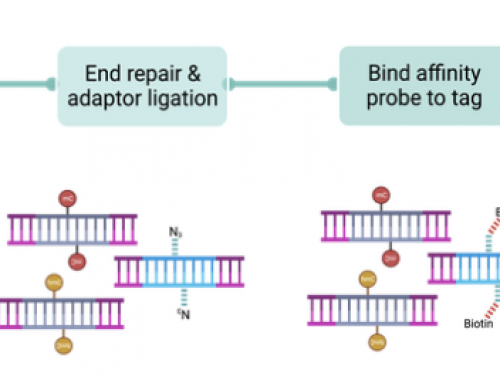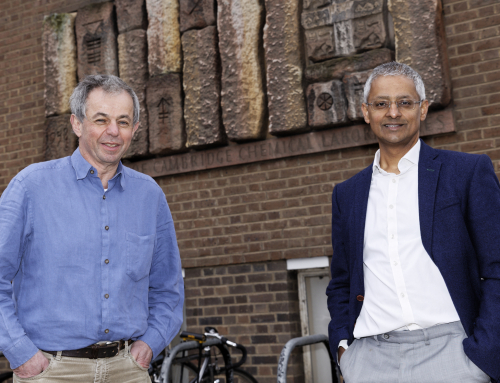Continuing with my summary of what happened at #AGBT23 here’s my round up of the big announcements from Illumina. Of course whilst much of the data presented at the meeting was generated on an Illumina sequencer there was a very significant amount of non-Illumina data particularly in the long-read space – and most readers probably saw the announcements and Twitter discussion of Illumina’s latest entry into this space ICLR/Infinity (more on that at the end of the post).
Many of the companies sponsoring AGBT provide technologies that enable much more than just genomes, exomes and RNA-Seq from an Illumina box: 10X Genomics were there with everything single-cell, spatial and in-situ, Nanostring wowed in their lunchtime workshop with fantastic examples of how users are digging deep into biology with their spatial technologies, and Bionano Technologies offered their non-seqenecing solution for optical genome mapping and hosted a great talk by Alexander Hoischen about replacing traditional cytogenetic methods and identifying previously undetectable SVs relevant to disease.
But enough about them…here’s my Illumina AGBT roundup.
The Illumina innovation roadmap presented at AGBT featured the new 2x300bp NextSeq chemistry, Infinity (Illumina Complete Long Reads), DRAGEN updates and NovaSeq X. The Illumina Lounge had NovaSeq X front and centre alongside their flagship NextSeq benchtop sequencer and I was able to give my daughter a tour of the instruments via WhatsApp while visiting the lounge during the conference. Incidentally, Abizar Lakdiwalla (previoulsy ILMN now at Apton) helpfully pulled out the latest numbers on instrument placements, NovaSeq 6k n=1,820 (340 in ’22). NextSeq 1k/2k n=1,570 (700 in ’22), NextSeq500/550 n=5,180 (510 in ’22), MiSeq, MiniSeq, iSeq installed base ~ n=14,280 (1,670 in ’22).
If you’d like to get a more visual, and a Illumina-centric, view then tune into Anthony Beckhouse’s, AGBT23 webinar roundup.
NovaSeq X series
Illumina announced the first shipment of their latest and greatest sequencer, NovaSeq X, to The Broad Institute. This is the latests in a strong pedigree of high-scale DNA sequencers built on the original Solexa/Manteia technology. The instrument comes as NovaSeq XPlus (available Q1 2023) and NovaSeq X (later) and runs the new XPLEAP-SBS chemistry to deliver 8Tb per 25B read flow cell (see specs). Kimberly Busiek, Associate Director Product Management, gave a Spotlight Talk “This is the genome era” in the Illumina lounge and discussed the features and benefits of the NovaSeq X; she also said that 140 have been ordered so far (~10% of the NovaSeq install base). Niall Lennon, Senior Director of Translational Genomics at the Broad Institute, updated users on what the Broad is doing with genomes (over 300,000 WGS in the last 2 years alone) and how the new NovaSeq X fits into their scientific roadmap. He focused their initial use of @GenomeInABottle standards to assess sequence quality – which was great, higher %Q30 than NovaSeq and better quality at the end of the reads (opening up even longer reads in the future maybe), great SNP and InDel performance. The Broad has 5 NovaSeq X on order and, somewhat surprisingly, Niall announced pricing for contract sequencing of $1250 per 2x150bp lane on the 10B read flowcell or
$350 per 30x Human Genome. This was likely a frustration for the many core managers sat in the audience or following the conference on Twitter; most of whom cannot hope to match the low costs that a massive genome centre like The Broad can offer with such volume, and the operational efficiencies and discounts that come with that. FYI: Niall also spoke in the Ultima Genomics workshop about their experiences with that instrument over the past 3 years.
NextSeq product updates and key applications
Sam Hester, Sr. Product Marketing Manager, shared how XLEAP-SBS Chemistry drives improved quality and performance on NextSeq 1000/2000: 2×150 has >85% Q30 ~$17/Gb He also highlighted customer data from early access collaborations (his talk was not available on the Illumina website when I wrote this) for the recently launched P1 and P2 600 cycle kits, which will enable immune repertoire, metagenomics, and other routine and emerging methods. I’d like to see what users think of this chemistry and the opportunities for “medium-reads”, i.e. long enough to span multiple exons in an RNA-Seq read, but at the scale and cost of Illumina. I’d expect this to be an easy addition to any lab running RNA-Seq with slight modifications to the library prep to capture more of the longer cDNAs.
The first data was shared on NextSeq 1000/2000 instruments with XLEAP-SBS chemistry, which offers improved quality and performance with preliminary data showing more than a 50% reduction in phasing and prephasing, relative to standard Illumina SBS chemistry. XLEAP-SBS chemistry and the P4 flow cells will enable the greater than 1,500 NextSeq 1000/2000 install base to expand capabilities and application breadth.
Infitnity
Illumina shared the novel sequencing methodology behind Illumina Complete Long Reads (ICLR = Infinity). Alex Aravanis, CTO, presented in the main Illumina workshop on the ICLR product roadmap, early access customer data, and more. Illumina say that this technology is unlike anything on the market but it smells an awful lot like many of the other synthetic long-read approaches to me. I’d encourage you to make up your own mind and check out Alex’s Twitter thread (see below) or the ICLR whitepaper that summarises what he presented at the Illumina Genomics Forum last year on their benchmarking against PrecisionFDA Truth Challenge v2.
ICLR was introduced as “the worlds first land-marked technology at the single molecule scale, generating complete, highly accurate long reads”. Illumina say that “it is the only technology that addresses the 5% of hard-to-read genic regions: at scale; with high accuracy; all on a single instrument; and with 90% less DNA input than other long reads”. The scale is likely to be the biggest draw to customers and the fact that is should be a relatively easy add-on for current Illumina users makes it tempting to try. The ability to use standard gDNA without specialized extraction and handling methods will help too – although those specialised methods, and the fresh samples needed to get them, mean the whales are unlikely to be harpooned by this particular tech.
Those “landmarks” were not clearly explained in ALex’s talk. The Longas technology uses a noisy polymerase to mutagenise the long strand by inclusion of dPTP aka the Landmarks, and the whole “long read” is then mapped back to a short-read graph genome. The conversation in the audience and on Twitter may have been heavily biased but was not overly positive. The technology is clearly more synthetic than not and Illumina seem afraid to “call a spade a spade”.
I do not remember seeing any confirmation from Illumina that this is indeed the Longas MorphoSeq technology (as described in a previous blog). And it would have been great to catchup with former Longas CSO Aaron Darling, now a Director of Software Development at Illumina.
Lastly, a personal plea to Francis:
Illumina has been the bedrock of AGBT for a long time now and I’d like to see a party that competes with the one PacBio threw. More rock than rap please. Might I suggest Bon Jovi? 😉








Leave A Comment